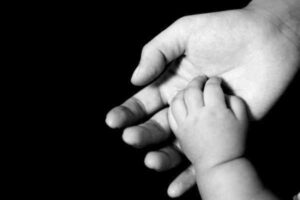Unveiling the Silent Crisis: The Urgent Need for Children’s Rights Advocacy
In an era where global awareness of human rights is at an all-time high, the plight of children remains a silent crisis that demands urgent attention. Across the globe, millions of children are subjected to various forms of rights violations, including exploitation, abuse, and neglect. This article aims to shed light on the pressing need for children’s rights advocacy, exploring the multifaceted impact of these violations, the alarming statistics that underscore the crisis, successful advocacy efforts, the role of governments, and how communities can mobilize to create a stronger movement for children’s rights.
Understanding the Silent Crisis: An Overview of Children’s Rights Violations Worldwide
Children’s rights violations manifest in numerous forms, including child labor, trafficking, sexual exploitation, and denial of education. According to the United Nations Convention on the Rights of the Child (UNCRC), every child has the right to protection from abuse, neglect, and exploitation, yet millions are deprived of these fundamental rights. In conflict zones, children are often recruited as soldiers, while in many developing nations, poverty forces families to send their children to work instead of school. The COVID-19 pandemic has exacerbated these issues, pushing vulnerable children further into the shadows as resources become scarcer and support systems falter. The silent crisis of children’s rights violations is not just a humanitarian issue; it is a global emergency that requires immediate and sustained action.
The Impact of Neglect: How Ignoring Children’s Rights Affects Society at Large
Neglecting children’s rights has far-reaching consequences that extend beyond the immediate suffering of the affected individuals. When children are deprived of their rights, it hampers their development and potential, leading to a cycle of poverty that can persist for generations. Societies that fail to protect their children often experience higher rates of crime, lower educational attainment, and diminished economic productivity. Furthermore, the psychological impact of rights violations can lead to long-term mental health issues, affecting not only the individuals but also their families and communities. By ignoring the rights of children, societies risk undermining their own future stability and prosperity, making advocacy for children’s rights not just a moral imperative but a societal necessity.
Key Statistics: The Alarming Data Behind the Children’s Rights Crisis
The statistics surrounding children’s rights violations are staggering and serve as a wake-up call for global action. According to UNICEF, an estimated 160 million children are engaged in child labor, with 79 million involved in hazardous work. Additionally, around 1 in 5 children worldwide live in extreme poverty, lacking access to basic necessities such as food, clean water, and education. The World Health Organization reports that approximately 1 in 10 children experience sexual violence before the age of 18, while millions more are subjected to emotional and physical abuse. These figures highlight the urgent need for comprehensive strategies and policies to address the systemic issues that perpetuate children’s rights violations and to ensure that every child can enjoy their rights fully.
Advocacy in Action: Successful Campaigns for Children’s Rights Around the Globe
Across the globe, numerous advocacy campaigns have successfully raised awareness and driven change for children’s rights. One notable example is the “End Child Marriage” campaign, which has mobilized communities and governments to take action against the practice that affects millions of girls worldwide. In countries like India and Bangladesh, grassroots organizations have worked tirelessly to educate families about the dangers of child marriage, resulting in significant legislative changes and increased community support for girls’ education. Another successful initiative is the “No Child Born to Die” campaign, which focuses on reducing child mortality rates through improved healthcare access and education. These campaigns demonstrate the power of collective action and the potential for transformative change when communities come together to advocate for children’s rights.
The Role of Governments: Legal Frameworks and Their Effectiveness in Protecting Children
Governments play a crucial role in safeguarding children’s rights through the establishment of legal frameworks and policies. The UNCRC serves as a foundational document that outlines the rights of children and the obligations of states to protect these rights. However, the effectiveness of these frameworks often varies significantly across countries. While some nations have made commendable progress in enacting laws to protect children, others continue to fall short due to lack of enforcement, insufficient resources, or political instability. The challenge lies not only in creating robust legal frameworks but also in ensuring that they are implemented effectively and that children have access to the protections they are entitled to. It is imperative for governments to prioritize children’s rights in their agendas and to collaborate with civil society to create a comprehensive approach to advocacy and protection.
Call to Action: Mobilizing Communities for a Stronger Children’s Rights Movement
The fight for children’s rights requires a concerted effort from all sectors of society, including individuals, communities, and organizations. Mobilizing communities to advocate for children’s rights can take many forms, from grassroots movements to educational campaigns that raise awareness about the issues at hand. Engaging local leaders, parents, and youth in discussions about children’s rights can foster a culture of advocacy and empowerment. Additionally, leveraging social media platforms can amplify voices and connect advocates across borders, creating a global network dedicated to the cause. By fostering a sense of collective responsibility and encouraging active participation, communities can play a pivotal role in driving change and ensuring that children’s rights are recognized and upheld.
The silent crisis of children’s rights violations is a pressing issue that requires immediate attention and action from all corners of society. By understanding the scope of the crisis, recognizing its impact, and mobilizing advocacy efforts, we can create a world where every child is afforded the rights and protections they deserve. It is our collective responsibility to ensure that the voices of children are heard and that their rights are prioritized. Together, we can work towards a future where every child has the opportunity to thrive, free from exploitation and abuse.









